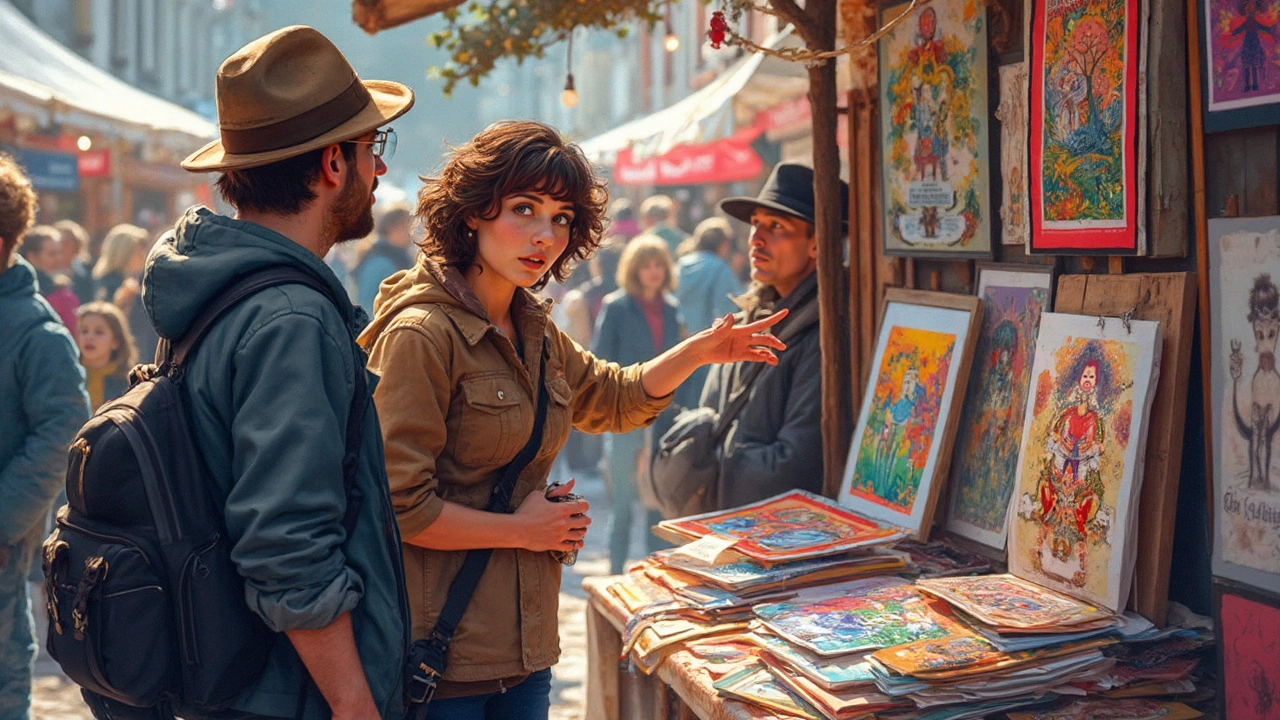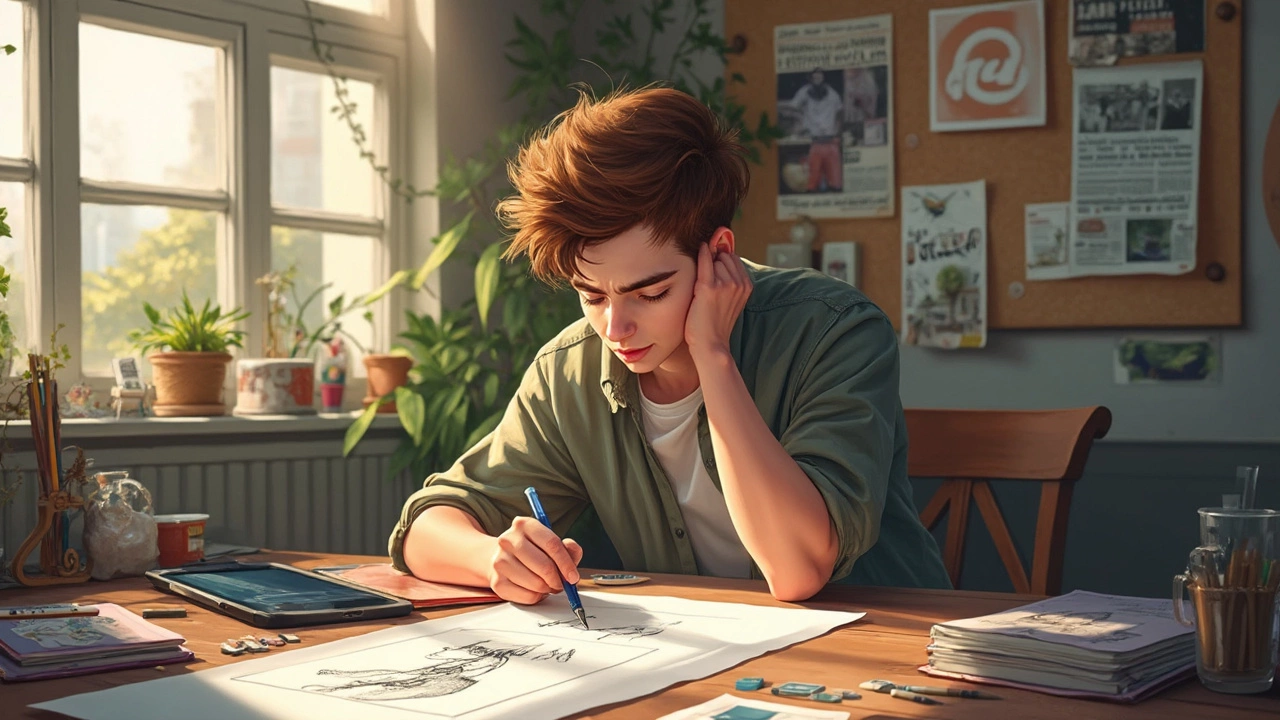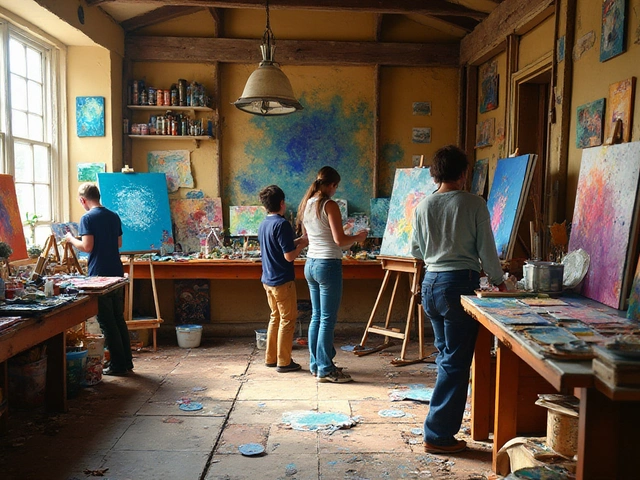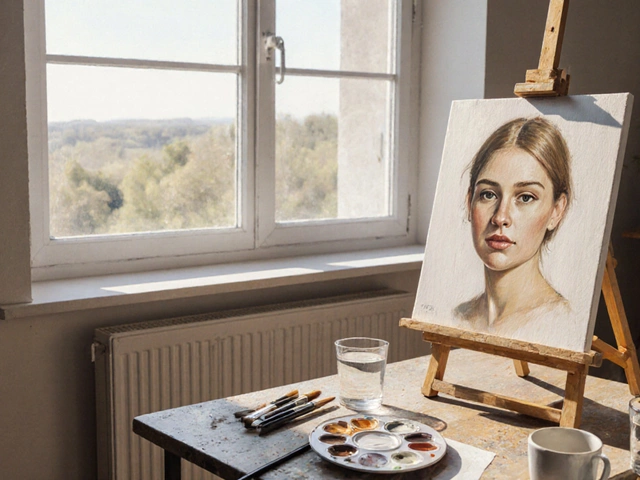You might think tracing is just a harmless shortcut, something artists do to learn or to save time. But as soon as money or public sharing gets involved, things can get tricky—fast. If you’ve ever wondered if tracing over someone else’s artwork could land you in hot water, you’re not alone. There’s a fine line between practicing your skills and breaking the law, and it all hinges on a mix of copyright rules, fair use, and how you share or sell the result.
Let’s get something out of the way: tracing isn’t automatically illegal, but it’s not a free pass either. Selling traced art prints or posting them online without permission can open you up to copyright claims. Even if you change some details or add your twist, the original artist might still have rights that protect their work. If you’re an artist, parent, or just someone experimenting with digital tools, knowing the basics here isn’t just helpful—it’s necessary.
I’ve had my kids, Eldon and Maris, come home from school excited about tracing their favorite cartoon characters. That’s totally fine when it’s just for personal learning or fun. But what if you want to put that image on a t-shirt, or upload it to your online store? Suddenly, the stakes go way up, because laws meant to protect artists’ creations come into play.
- What Does ‘Tracing’ Really Mean?
- When Is Tracing Considered Illegal?
- Tracing, Copyright, and Fair Use: Breaking Down the Law
- Tracing for Practice vs. Tracing for Profit
- Safest Ways to Use Reference Images
- Tips for Artists: Staying Out of Legal Trouble
What Does ‘Tracing’ Really Mean?
Tracing is exactly what it sounds like—putting a sheet of paper (or a digital layer) over existing artwork and copying the lines or shapes to make a new image. People have been doing it for ages, from old-school cartoonists using lightboxes to kids tracing their favorite superheroes. Today, digital tablets make it even easier to pull an image onto a screen and trace right over it with a stylus.
But tracing isn’t always about making a perfect replica. Sometimes artists trace just the rough shapes for practice, or to quickly block out the composition before changing details. Other times, tracing is used for more exact copies. Schools often encourage tracing to help students develop muscle memory or understand how pros build their drawings from simple shapes.
Here’s the thing: tracing isn’t just one technique. It falls into a few camps:
- Direct copying: Lining up exactly over the original and duplicating every detail. This is the kind that gets folks into trouble if they post or sell the results.
- Loose tracing: Using the image as a base, but making lots of changes—like switching up the pose, outfit, or hairstyle. This gets murkier, but the original artist can sometimes still recognize their work.
- Tracing for learning: Practicing anatomy, movement, or style without sharing the traced artwork publicly.
Tracing exists in both physical and digital art. On paper, you might use a window or lightbox. Digitally, you just lower the opacity on a layer and go to town. No matter the method, tracing always involves using someone else’s existing work as a direct reference—whether you copy it exactly or make big changes.
For anyone making tracing art or using traces in bigger projects, the intent (practice, private, or public use) and outcome (how closely it matches the original) matter a lot. These details shape whether tracing is just a learning tool or a copyright minefield.
When Is Tracing Considered Illegal?
Here’s the no-nonsense answer: tracing becomes illegal when what you make is basically a copy of someone else’s protected work and you use it in ways the law doesn’t allow. This pops up the moment you try to sell, share, or even claim traced artwork as your own—especially if you’re using it for art prints or merch.
According to U.S. copyright law, anything that’s “substantially similar” to the original can be infringing, even if you didn’t copy it pixel-for-pixel. So, if your traced piece looks a lot like someone else’s and theirs is copyrighted, you could be in legal trouble. This isn’t just a threat for big-time artists, either. There have been real court cases where hobbyists and small businesses were sued for tracing, selling, or posting art they didn’t have the rights to. Disney and other big studios are known for going after traced copies of their characters.
Let’s break down the most common illegal situations:
- Selling traced art: If you make money off traced work—whether through prints, t-shirts, or digital files—you’re likely violating copyright.
- Posting traced work as your own: Uploading traced art to Instagram, an online portfolio, or any public place without crediting or getting permission is risky.
- Tracing fan art for profit: Even if the original is fan art, tracing and selling it can still break the rules if you don’t have permission.
The only times you’re in the clear are when the original work is in the public domain (like a centuries-old painting), you have the creator’s written permission, or your tracing is so different that it becomes “transformative”—and even then, it’s a legal gray area.
If you’re only tracing for practice at home and not sharing, you’re fine. But once tracing steps into profit or publicity, copyright law becomes an issue you can’t ignore.
Tracing, Copyright, and Fair Use: Breaking Down the Law
If you’re wondering when tracing tips into illegal territory, the answer usually boils down to copyright. Whenever you copy or trace another person’s artwork—whether it’s a painting, digital drawing, or even a photo—there’s a good chance it’s covered by copyright. Copyright comes into play as soon as the image is created. The original creator automatically owns those rights, no paperwork needed.
Here’s something wild: Copyright protection lasts for the lifetime of the artist plus 70 years (in the US, Canada, UK, and most places). That means tracing over someone else’s work, even if it’s decades old, can still get you in trouble. If you trace work by Leonardo da Vinci? That’s fair game—he’s long gone and the Mona Lisa is public domain. But trace current comics or digital art on Instagram? Now you’re playing with fire.
When does tracing become a problem? Usually if you:
- Sell or share your traced art prints publicly
- Claim traced art as your own original work
- Use the traced art as the basis for merch (t-shirts, mugs, posters)
Some people ask, “What if I change a few lines or colors?” Courts look at whether your work is a derivative work—basically, does it closely resemble the original? Small tweaks don’t always make it legal. If the tracing still clearly looks like the source, you can still get slapped with a copyright infringement notice.
But what about fair use? This is where folks get confused. Fair use lets you use copyrighted work without permission, but only in specific situations like:
- Commentary or criticism (think: reviewing and discussing the art)
- Parody (making fun of the style or subject)
- Education or research (teaching students, but not selling prints)
If you’re just using the traced image for learning at home or in school, you’re probably safe. But if you start making money off it, the fair use defense falls apart fast.
Quick look at what’s legal versus risky:
| Activity | Usually Legal? |
|---|---|
| Tracing dead artists (public domain) | Yes |
| Tracing a living artist for fun/private use | Yes |
| Selling traced prints of copyrighted art | No |
| Posting traced art online as your own | No |
| Tracing for research or a school project | Yes (with credit) |
If you’re in doubt, always ask for the original artist’s permission. A quick DM could save you months of stress or a takedown notice. Basically: trace for practice, but if you want to share or sell, be sure your bases are covered.

Tracing for Practice vs. Tracing for Profit
Here’s the basic split: tracing for practice usually stays private, while tracing for profit steps into public (and risky) territory. A lot of artists start by tracing—it's a way to get comfortable with proportions, lines, and anatomy before drawing from scratch. In fact, art teachers often use tracing as a learning method, especially for younger kids or total beginners, to build muscle memory. So, if you’re at home tracing your favorite comic panel just to figure out how those hands look so good, nobody’s going to sue you. You’re safe as long as you don’t post it online, sell prints, or claim it’s your original work.
The real problems start when tracing moves from practice to profit. If you sell traced art prints, upload them to Etsy, or enter them in a contest—even if you only traced some parts—you’re entering legal gray areas. In the worst case, you could get a copyright strike, lose your social media account, get removed from selling platforms, or face actual legal threats from the original artist or copyright holder. The thing is, copyright law in most places (like the US, UK, and Canada) protects the specific way something is drawn, not just the overall idea. That means tracing a copyrighted image often counts as making an unauthorized copy, even if you change a few things.
Here’s a quick breakdown for what’s usually okay and not okay when it comes to tracing:
- Tracing art at home or for class projects? Go for it. Just don’t post it online or try to make money off it.
- Want to show your tracing on Instagram or YouTube? Only do this if you have permission from the original artist, or if the work is public domain (like really old paintings—think Da Vinci, not Disney).
- Selling anything you traced—prints, shirts, stickers, whatever—without permission is a big risk. Even giving it away online can cause trouble.
Some artists do allow others to trace their work for learning, but most want at least a credit or a private message. Always check an artist’s rules if you’re not sure. When in doubt, use officially licensed reference images or free-to-trace resources.
Safest Ways to Use Reference Images
Most artists at some point lean on reference images—it’s just part of the learning process. But if you want to avoid copyright headaches, it pays to use them wisely. Here’s what actually keeps you safe:
- Use royalty-free or public domain images. There are sites like Unsplash, Pexels, and Pixabay that give you completely free photos, meaning you can paint, draw, or trace over them without worrying about copyright strikes. Want to play it extra safe? Go public domain: stuff published before 1929 or images released without copyright restrictions are yours to use.
- Get permission from the artist or photographer. If you see a cool photo or artwork and want to turn it into your piece, just send a message and ask for the okay. Many creators are happy to say yes as long as you give credit.
- Heavily transform the image. If you use a reference but remake it in your own style, change key elements, or create something clearly new, you’re generally in the clear. U.S. copyright law talks about “transformative works,” which means the more original you make it, the safer you are.
- Stick to educational or personal projects. Using copyrighted reference images for practice or homework rarely causes problems—just don’t post or sell the result.
Here’s a quick breakdown of reference image types and what you can do with them:
| Image Type | Can You Trace? | Can You Sell the Result? |
|---|---|---|
| Public Domain | Yes | Yes |
| Royalty-Free (with license) | Yes | Often yes, but check license |
| Copyrighted/No Permission | Technically no | No |
| Original Photo/Artwork by You | Yes | Yes |
If you’re unsure about a reference image, look for image sources that use Creative Commons Zero (CC0) licensing, or just make your own reference photos. And if you’re working with anything you traced, especially digital art prints for sale, double-check the origin before you hit “publish.” Getting hit with a takedown is way more stressful than taking a minute to verify your source.
Tips for Artists: Staying Out of Legal Trouble
Want to avoid a copyright headache? You’ll need to do more than just avoid copying famous characters. Here are real steps you can actually follow to steer clear of legal problems whether you’re making art prints or sharing digital work online.
- Use Your Own Reference Photos: Snapping your own pictures is the safest move. You own those images, so you can trace or change them however you want.
- Ask for Permission: Reach out to the original artist if you love their work and want to trace it for your portfolio, Etsy shop, or even Instagram. Plenty of artists will say yes—as long as you credit them and don’t sell copies.
- Look for Public Domain or Creative Commons Art: Some art comes with open licenses. Government museums, libraries, and websites like Wikimedia Commons have a ton of images that are okay to use, sometimes even for commercial work. Just double-check the rules before you post or sell anything.
- Don’t Count on “Fair Use.” A lot of artists think making “enough” changes to traced art makes it legal. Courts usually disagree. Even if you change colors or swap elements, the original work could still be recognized—and that’s enough to get sued.
- Read Platform Rules Before Posting: Sites like Etsy, Redbubble, Instagram, and DeviantArt all take copyright seriously. Many have auto-filters or even staff looking for art theft complaints. If you get flagged, your store or post can vanish overnight.
The cost of ignoring these tips isn’t just losing sleep. Copyright lawsuits can get wild, with damages running high no matter how famous (or not) the original art is. Here’s a quick look at how things can stack up if you’re caught tracing without permission:
| Violation | Typical Fine (USA) | Other Consequences |
|---|---|---|
| Selling Traced Prints | $750–$30,000 per work | Cease & Desist, account ban, reputation hit |
| Using Art on Merchandise | $5,000–$150,000 per work (if proven willful) | Legal fees, product takedowns, forced refunds |
| Social Media Copyright Claim | Typically none, but repeat issues can lose you your account | Content removal, shadowbans |
The bottom line? The easiest way to keep making and selling art without stress is by starting with material you know you’re allowed to use. Build your own library of photos and sketches, double-check sources, and always play it straight when it comes to giving credit. It saves a lot of trouble down the road.





